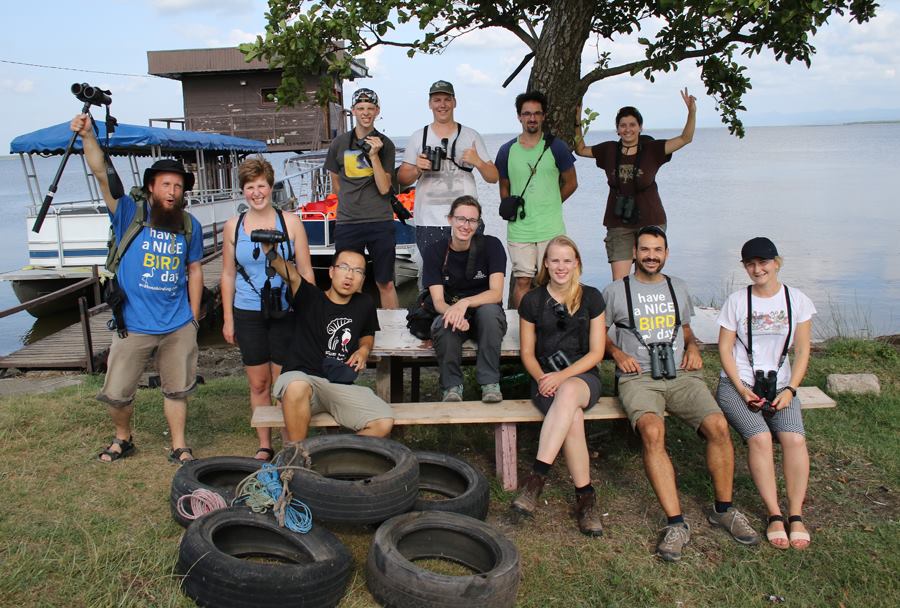Rarity: Eleonora's falcon flies over station 2
First rare migrant of the season! Today station 2 enjoyed close views of an Eleonora's Falcon soaring over the counters for a short time. This dark morph bird still shows retained juvenile flight feathers combined with moulted body plumage, indicative of a 2cy bird. It is the 3rd record for the Batumi Raptor Count, after two records from 2011 and 2012.
Migration is otherwise rather calm, with Honey Buzzards streams slowly building up. 3500 of them were counted this afternoon.
Photo by Bjorn Alards.
Photo by Bjorn Alards.
Start of the 10th autumn season count
Tomorrow the 10th edition of the Batumi Raptor Count officially starts! Last days team members were actively working to prepare the count. Our new count coordinators team (Aki, Xu & Hélène) and all counters will be happy to bring their scopes and clickers to the count stations tomorrow for the beginning of a new adventure.
Today a part of the team visited Kolkheti National Park to enjoy a different birding atmosphere. White-winged and Whiskered Terns were present, there were quite some Little Gulls and few Slender-billed Gulls, and as highlights were 3 White-tailed Eagles and some Ospreys.
Wish us good fortune in the months to come...!
NEW BRC Publication in Sandgrouse
We are proud to see our study "Understanding hunters' habits and motivations for shooting raptors in the Batumi raptor-migration bottleneck, southwest Georgia" published today in Sandgrouse, the journal of the Ornithological Society of the Middle East and the Caucasus (OSME). Congratulations Anna Sandor, Johannes Jansen and Wouter Vansteelant!
In a joint effort with SABUKO - Society for Nature Conservation (and following up on previous research by Johannes Jansen) extensive field work was conducted in autumn 2014 to study raptor shooting practices in the Batumi bottleneck. Anna Sandor now lead the publication of the results in the latest issue of Sandgrouse.
Anna and her team first conducted interviews with local hunters showing that hunters mainly shoot raptors for pleasure. Many hunters consume raptors, but the shooting is not primarily motivated by self-sustenance. By monitoring hunting activities from strategic vantage points and counting bird remains in the hills it could also be confirmed that harriers are especially sensitive to shooting, making up 14% of all casualties while they only make up 1.5% of the total migratory flight in Georgia.
These and other results described in this article are the kind of scientific evidence that local authorities need to develop effective conservation measures in the Batumi bottleneck.
The study would not have been possible without the massive contribution of volunteers: Oliver Reville, Anders Gray, Dennis de los Rios, Dietrich Ristow, Natia Javakhishvili and Tamar Dumbadze.
If you are interested in this publication, become a member of OSME or order a copy here: http://www.osme.org/content/sandgrouse-39-1
OSME also allows us to spread the publication through our website.
Anna Sandor, Johannes Jansen, Wouter M. Vansteelant. (2017) Understanding hunters' habits and motivations for shooting raptors in the Batumi raptor-migration bottleneck, southwest Georgia. Sandgrouse 39:1, 2-15.



